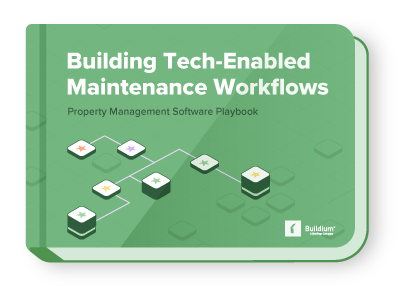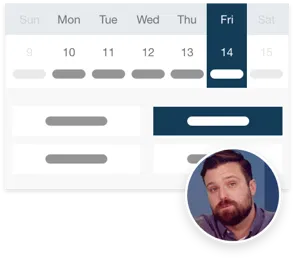As a residential property manager, you have a front-row seat to one of the best opportunities for building wealth: owning rental properties. Every day, you help property owners grow their assets—so why not start doing the same for yourself?
Start your free trial today!
Try Buildium for free for 14 days. No credit card needed.
Start Your TrialThis guide will walk you through everything you need to know to move from managing other people’s investments to growing your own portfolio. Along the way, you’ll find practical advice and specific steps to help you start strong.
Understanding the Basics of Investment Properties
Managing your own property uses many of the same skills you already apply daily, but ownership shifts your focus.
When you manage for others, your job is to protect their investment and deliver reliable cash flow. When you manage your own rental, you’re building personal wealth, taking advantage of tax benefits, and making strategic decisions that directly impact your future.
The best part? You already know how to handle tenants, maintenance, budgeting, and legal compliance. Now, you just need to apply that experience with an owner’s mindset.
Why Transition to Rental Property Investment?
Moving from property management to ownership opens doors you can’t unlock any other way. You gain financial freedom, diversify your income, and create opportunities for long-term wealth.
Owning property also gives you more control over your career. You might grow a portfolio that supplements your current income or eventually replace your third-party management work altogether.
Today, independent investors own around 70% of rental housing in the U.S., and the number continues to grow. As someone already working inside the industry, you’re better equipped than most to succeed.
Step 1: Evaluate and Manage Your Existing Skills and Resources
If you have experience in the industry, you also already have a solid foundation for investing. Skills such as tenant screening, handling maintenance, and navigating local regulations directly transfer to rental ownership. These are exactly the areas where new investors struggle—and where you can excel immediately.
Your professional network is another huge advantage. Relationships with lenders, brokers, contractors, and inspectors can make a big difference when you start investing. Think about the vendors you trust most. Chances are, they would love to work with you on your own projects.
Take a few minutes to map out the contacts you already have. Take an inventory of your existing skills and relationships. Ask yourself:
- Which vendors would I trust with my own properties?
- Which lenders offer investor-friendly programs I could use?
- Where do I see opportunity gaps in the markets I manage?
By leveraging what you already know and who you already trust, you’ll move faster and avoid many mistakes first-time investors make.
Step 2: Set Your Investment Goals
Before buying your first rental, you need a clear plan. Different strategies suit different goals, so spend time thinking about what you want your investments to do for you.
Short-term strategies, such as flipping houses or managing short-term rentals, can create faster income but often come with more risk. Long-term buy-and-hold investments tend to build steady cash flow and appreciation over time. Neither path is “better”. The right choice depends on your personal goals and comfort level.
Ask yourself:
- Are you looking for monthly income, long-term wealth, or both?
- Do you prefer light renovations or major rehabs?
- How much risk are you willing to take?
- What timeline fits your bigger financial picture?
When you set clear goals, you’ll make smarter decisions about which properties to buy and how to manage them.
Step 3: Build Your Financial Plan
A solid financial plan will keep you moving forward without second-guessing every step. This stage is all about putting your operational knowledge into financial forecasts that are realistic, not wishful.
Start by creating a realistic budget. Factor in your down payment, closing costs, renovation estimates, and a safety reserve—ideally enough to cover six months of expenses. You know properties aren’t always full, and unexpected repairs happen. Plan for those cycles financially.
Then, project your cash flow carefully. List your expected rent income and subtract all expenses, such as your mortgage, taxes, insurance, maintenance, and vacancy periods. It’s better to be conservative with your numbers upfront than to face unpleasant surprises later.
In terms of financing, your professional background can also give you an edge. Lenders may view your management experience favorably when underwriting investment loans. You may already know local banks and credit unions that offer investor-friendly terms. You can also evaluate creative options such as seller financing or partnerships with much sharper eyes.
Explore different options based on your situation:
- Traditional mortgages work well for first purchases.
- Home equity lines of credit (HELOCs) allow you to tap into existing home value.
- Debt Service Coverage Ratio (DSCR) loans focus on the rental income potential, not your personal income.
- Partnerships let you share costs (and rewards) with trusted partners.
Building flexibility into your financial strategy will help you stay ready when the right opportunity shows up.
Step 4: Finding the Right Property
Finding a great rental is one part research, one part intuition—and you already have the tools to do both well.
Start by studying markets where rental demand is strong. Look for areas with job growth, good schools, and tenant-friendly amenities. Think about local factors, such as crime rates and economic development plans, that could impact long-term value.
When you spot a potential property, dig into the details. Review the major systems such as HVAC, roofing, plumbing, and electrical to catch any hidden problems early. Conducting thorough inspections now saves you money (and headaches) later.
Your existing relationships with real estate agents, contractors, and inspectors can also help you find deals before they hit the market. Often, the best opportunities come through conversations, not online listings.
Don’t be afraid to think creatively about your options:
- Would converting a large single-family into a duplex create more income?
- Is there an overlooked C-class neighborhood that’s improving steadily?
- Can you leverage relationships with real estate agents to find pocket listings?
Because you know what today’s renters want—and what will cause problems down the line—you’ll buy smarter from the start.
Step 5: Managing the Transition
Switching from third-party manager to owner-operator means a few extra responsibilities, but nothing you can’t handle. Your professionalism matters more than ever here.
our reputation is your most valuable asset. Treat your growing investment career as an extension of your professionalism — not a replacement for it. Create clear boundaries between your client portfolio and personal investments. Keep finances, systems, and communications separate. Stay open with your clients about your personal investments, and make sure you separate client business from personal ventures to avoid conflicts of interest.
First, consider forming an LLC to protect your personal assets. Speak with a CPA who specializes in real estate to help you set up the right structure and take full advantage of available tax benefits. And don’t forget to update your insurance to landlord coverage — it’s designed to protect rental property owners more thoroughly than a standard homeowner’s policy.
At the same time, start gradually assembling your personal investment team. Having a go-to team will save you time and help you avoid costly mistakes. You already know how valuable it is to have reliable vendors; you’ll also want to add on advisors such as:
- A real estate-savvy CPA
- An experienced mortgage broker
- A skilled real estate attorney
A trustworthy network of experts centered on these roles will protect your reputation and every investment you make.
Step 6: Managing Your Properties
Managing your own rentals doesn’t have to be overwhelming. In fact, the tools you may already being using—such as property management software— work just as well for personal portfolios as they do for client properties.
With the right software, you can automate rent collection, handle maintenance requests, stay on top of lease renewals, and keep detailed financial records. Putting strong systems in place early makes scaling up much easier.
If you don’t currently use a platform geared toward investors, it’s worth exploring. Buildium’s 14-day free trial and guided demo are great ways to see which tools match your style and portfolio size.
Investing in the right systems now will give you more freedom and fewer headaches as you grow.
Another tactic you should consider is tailoring your management style to match your investing strategy. For example, if you want minimal turnover, you might offer longer lease terms and focus on tenant retention strategies you’ve seen work. If you’re targeting value-add properties, you may invest a bit more upfront in amenities or cosmetic upgrades to drive higher rents.
Investing early in great systems and processes means you’re ready to grow from one property to five or 50— without burning out.
Your Next Steps as a Rental Property Owner
You already have the experience, the knowledge, and the professional instincts to succeed as a rental property owner. Moving from managing properties for others to owning your own portfolio is one of the smartest ways to use your skills to build long-term wealth.
Take the first step today by reviewing your skills, setting your goals, and creating a financial plan. Start small if you need to. Every unit you own gets you closer to the goals you’re aiming for.
Read more on Growth

